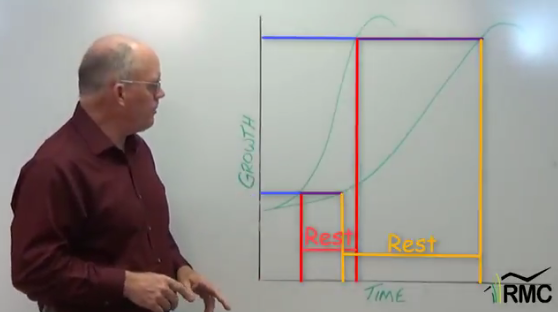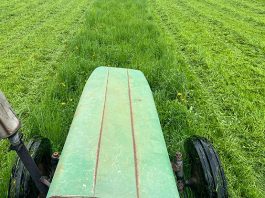What do cattle and lesser prairie-chickens have in common? They both love grasslands.

But grasslands are in trouble. Thanks to decades of fire suppression, redcedars, shinnery oak and mesquite are progressing steadily across the prairie. Open grasslands can become closed-canopy forests in as little as 40 years.
And that’s a big problem for the bird, the herd and the rancher. First, a female lesser prairie chicken won’t build her nest in a place that has more than one tree per acre. She insists on her nest being at least 1,000 feet from the nearest tree, and will stop using an area altogether when there are more than three trees per acre. Next, it’s a problem for cattle since the trees take up the space that would have grown forage for them. Finally, it’s a problem for ranchers because they can’t feed their stock, and removing all those trees is neither cheap nor easy.
Without help, the bird, the herd and the rancher were all headed for the endangered species list.

Enter the Lesser Prairie-Chicken Initiative.
The Natural Resources Conservation Service launched the initiative in 2010 as a partnership of ranchers, agencies, universities, non-profit groups and businesses, all with a common goal: wildlife conservation through sustainable ranching. Since 96% of the bird’s known habitat is on private ranch land, the partners agreed to work together to restore and maintain healthy grasslands for the sake of the bird and the herd.
The 4:46 minute video below is an example of one of these efforts. The Western Association of Fish and Wildlife Agencies (WAFWA) began developing a collaborative conservation plan to manage for sustainable populations of the lesser prairie-chicken and to maintain the industry and economy throughout the region.
Prescribed grazing is the core conservation practice of the plan and participating landowners receive an annual payment the term of the agreement. The plan also pays for tree removal – grubbing up mesquite, treating shinnery oak with herbicides, and burning or cutting down redcedar.
The WAFWA partnership includes 170 energy companies. They joined because it helped them take control of their own fate when working near a potential threatened and endangered species. They work with WAFWA scientists to choose the best locations for wells, pumps, wind turbines and solar panels to minimize problems for the chicken. The energy companies also provide funding to to project to improve habitat elsewhere to ensure the bird has a good home.
Yoakum County, Texas Rancher, Randy Beasley says the partnership has definitely improved his operation. Eight thousand acres of shinnery oak were chemically treated to restore the grasslands that had been there in 1941 when his grandfather bought the place. He’s now working on grubbing out 8,000 more acres of mesquite.
Beasley says his forage production has gone from about 400 pounds of grass per acre to 1200 to 1600 pounds per acre. He’s starting to see more chickens and says it’s been good for the land and the cattle.
“It’s kind of a dream come true,” he says.
Want to Get Involved?
 Five states are home to the lesser prairie-chicken: Colorado, Kansas, New Mexico, Oklahoma and Texas. If you’re located in one of the areas shown on the map, you could be eligible for special grassland restoration assistance. The best place to start is at your local Natural Resources Conservation Service Office. Click to find yours.
Five states are home to the lesser prairie-chicken: Colorado, Kansas, New Mexico, Oklahoma and Texas. If you’re located in one of the areas shown on the map, you could be eligible for special grassland restoration assistance. The best place to start is at your local Natural Resources Conservation Service Office. Click to find yours.
You can also download this brochure about the Lesser Prairie-Chicken Initiative Conservation Assistance Programs to find out more about what kind of help is available.





